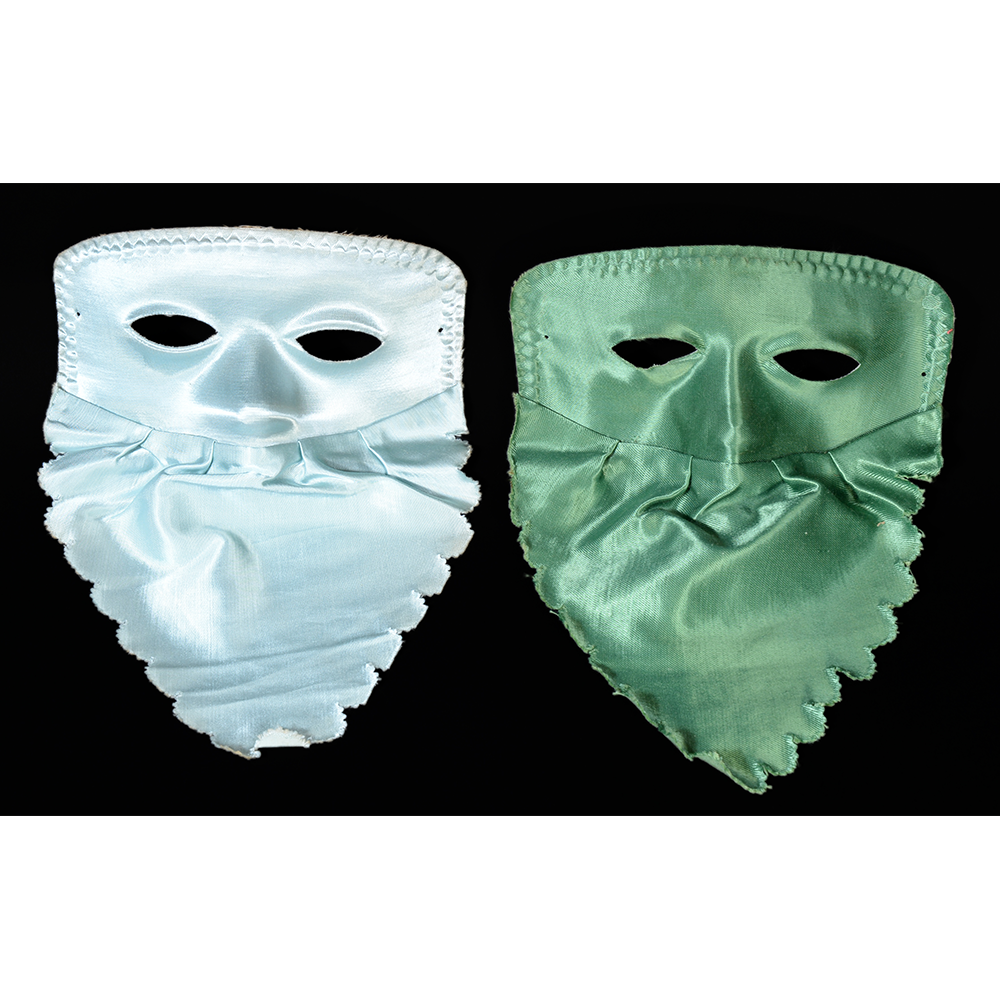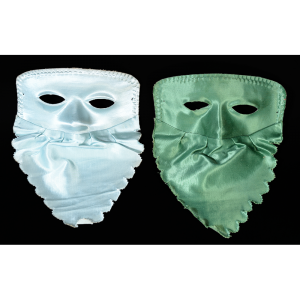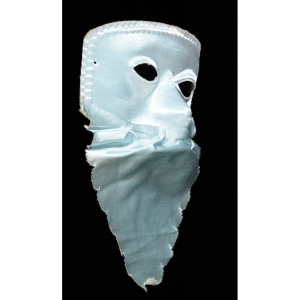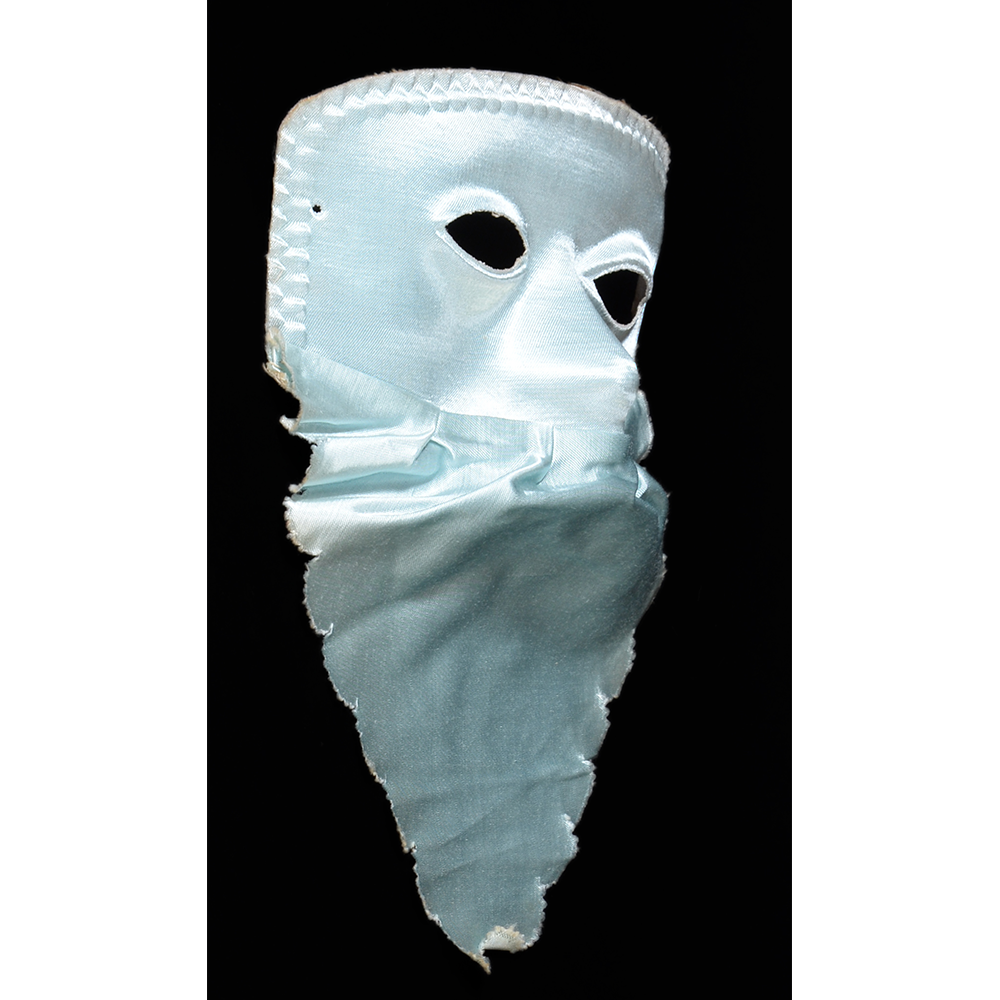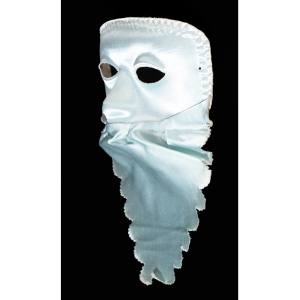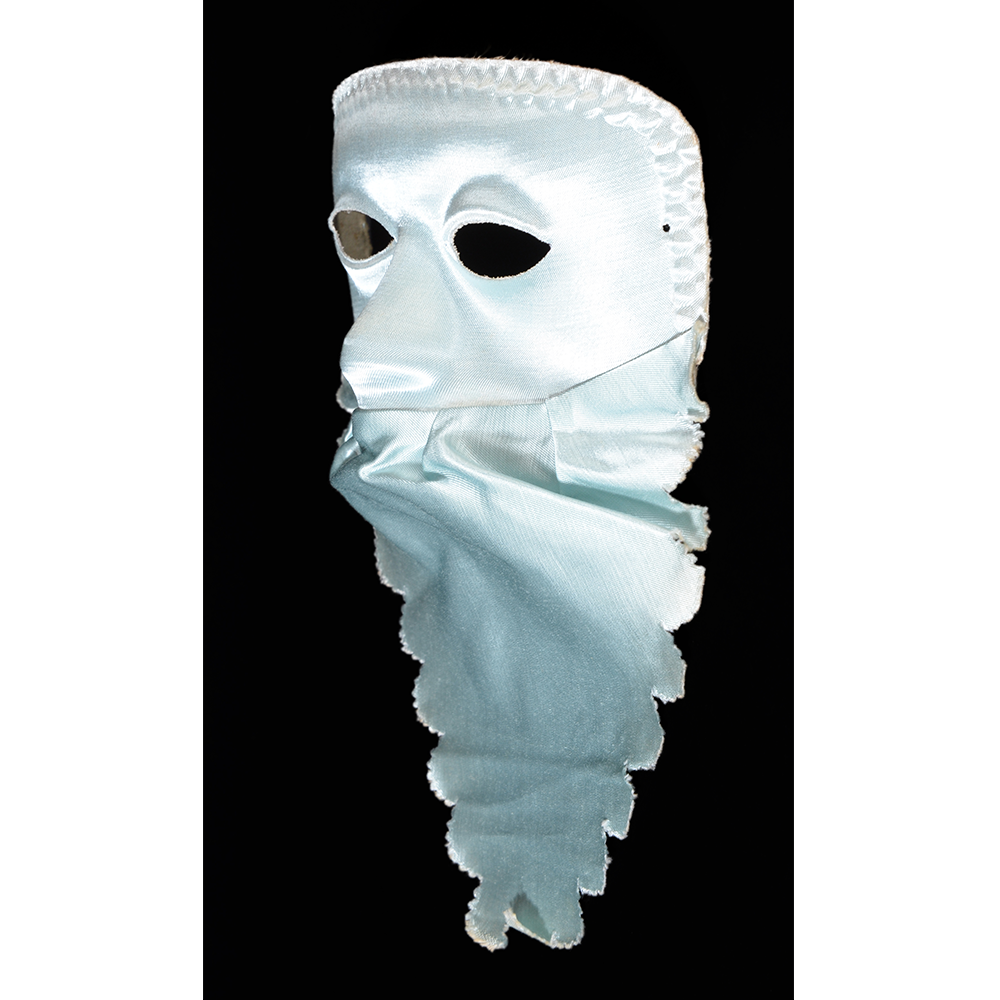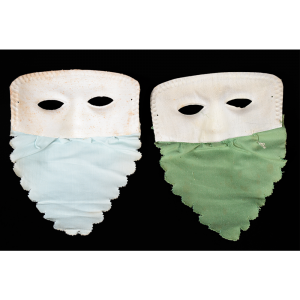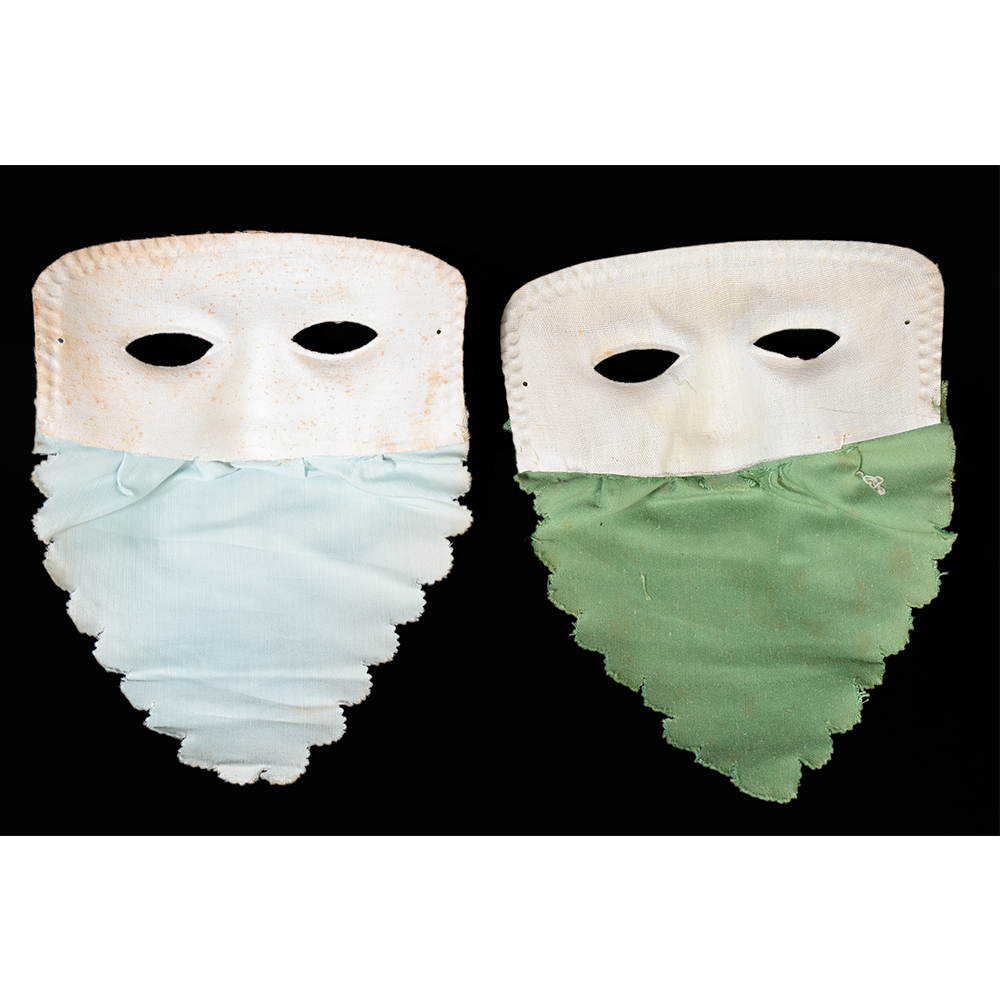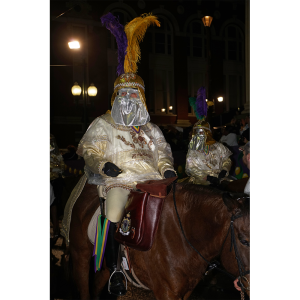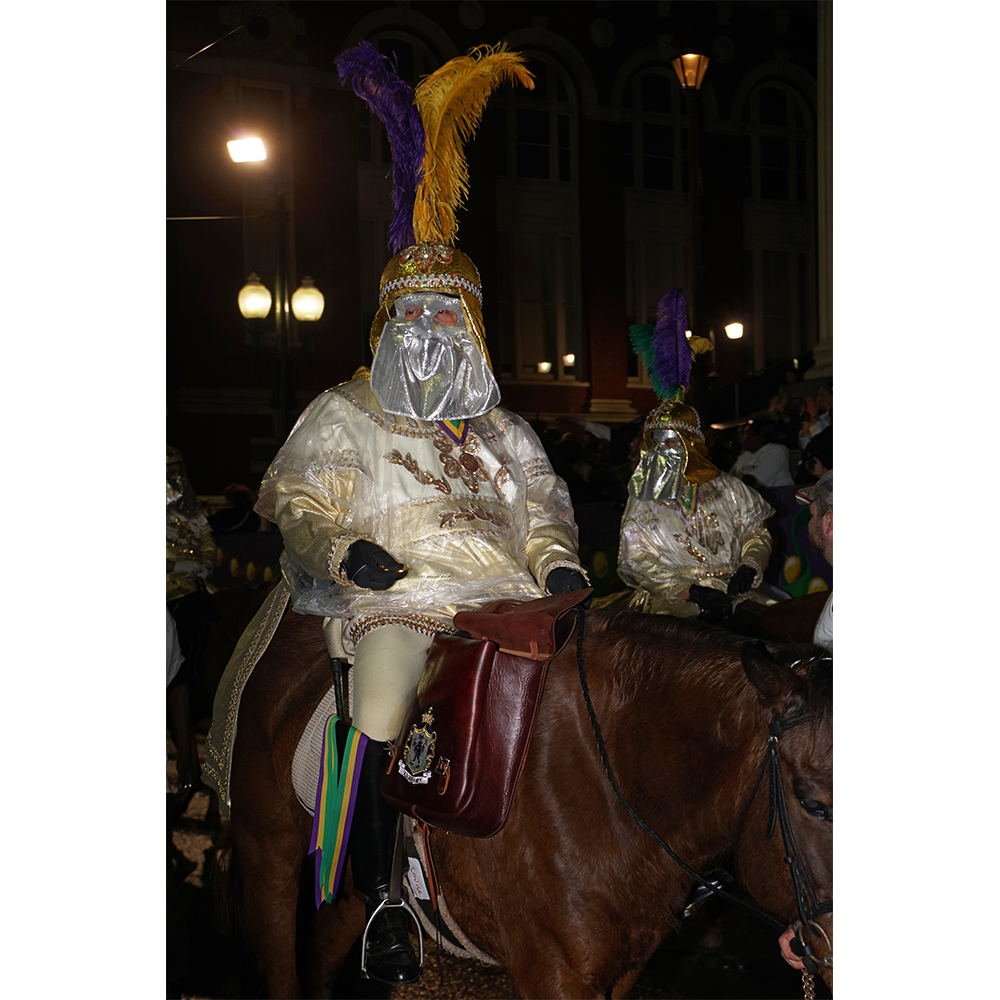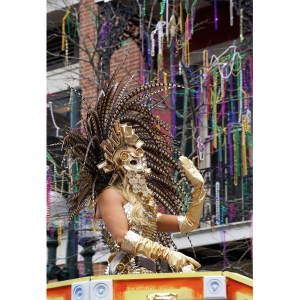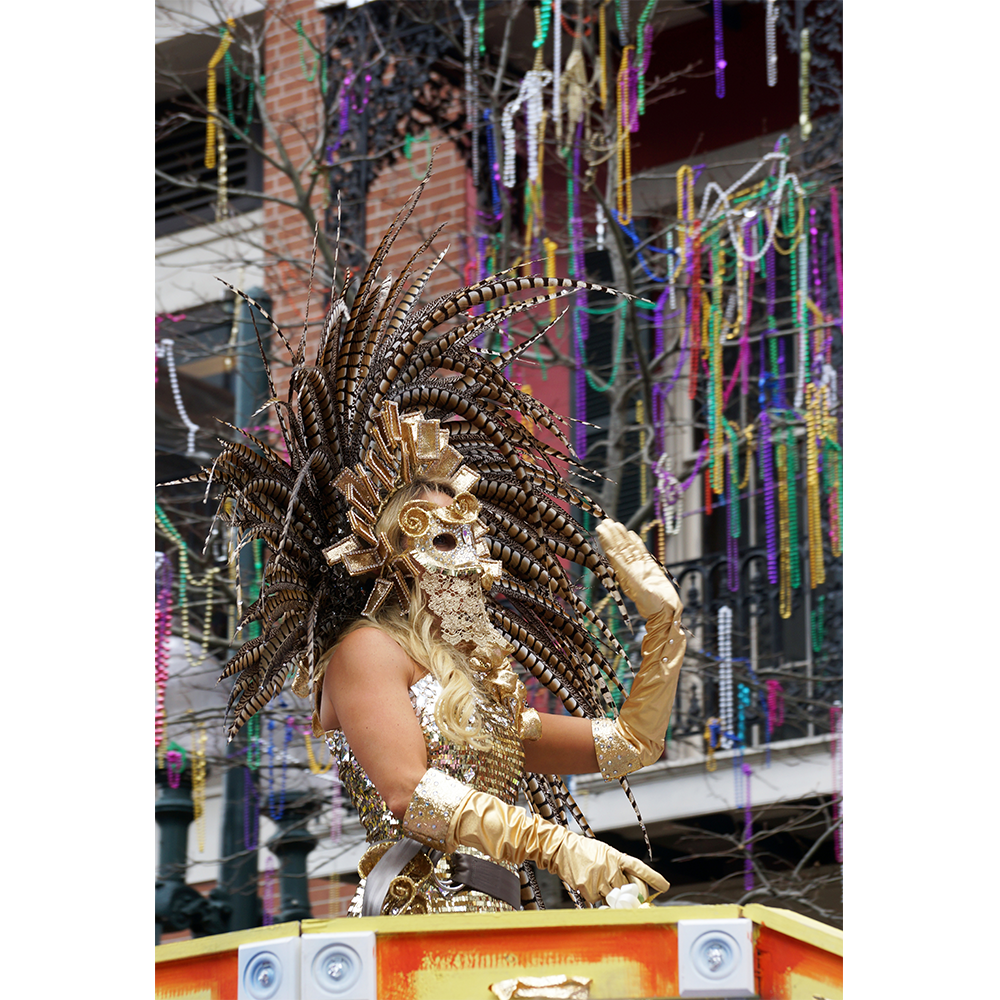TITLE: Mardi Gras Krewe Officer Masks
TYPE: face masks
GENERAL REGION: North America
COUNTRY: United States of America
SUB-REGION: New Orleans, Louisiana
ETHNICITY: Mixed
DESCRIPTION: Pair of Mardi Gras Krewe Officer Masks
CATALOG ID (green): NAUS053
CATALOG ID (white): NAUS054
MAKER: Unknown
CEREMONY: Mardi Gras
AGE: 1950s
MAIN MATERIAL: dyed satin cloth
OTHER MATERIALS: linen; adhesive; stitching
In Catholic practice, Mardi Gras (“Fat Tuesday”) is the last day of celebration of Carnival before the fasting period of Lent. In the United States, the holiday is nowhere more vigorously celebrated than in New Orleans, Louisiana. There, a two-week Carnival season terminating on Mardi Gras is celebrated with parades composed of elaborate costumes and masks, floats, marching bands, all organize by private “krewes” composed of public-spirited citizens dedicated to preserving the Mardi Gras tradition. Krewes tend to have a fairly constant structure of officers, who frequently ride horseback in handsome costumes and draped masks, float riders who chuck “throws,” or small gifts such as plastic beaded necklaces, toys, or mementos (usually with the krewe’s name and insignia) into the cheering crowds, and a guest “king” and “queen” of the krewe.
Mardi Gras in New Orleans is also typically celebrated with formal balls held by the krewes in honor of the king and queen, and to celebrate the season. Mask wearing among street celebrants is common as well. Traditionally, Mardi Gras masks are made of formed and painted leather, and can represent any character from real life or fantasy. In modern practice, cheap masks mass manufactured of sequined cloth or paper maché covered in dyed feathers have become common.
These masks are the kind normally worn by officers of the krewe who are charged with organizing the parade every year. Among the older krewes, the officers ride horses, wearing elaborate headdresses with feathers. The mask they wear is nearly always a cloth “domino” type mask with a veil over the mouth to allow relatively unimpeded talking and drinking. Other participants, such as float riders and celebrities, may wear similar masks.
In modern times, the masks are usually more elaborately decorated that these, which date from the 1950s.
Click above to watch a short documentary about Mardi Gras in New Orleans, Louisiana in 2019 and 2020.
